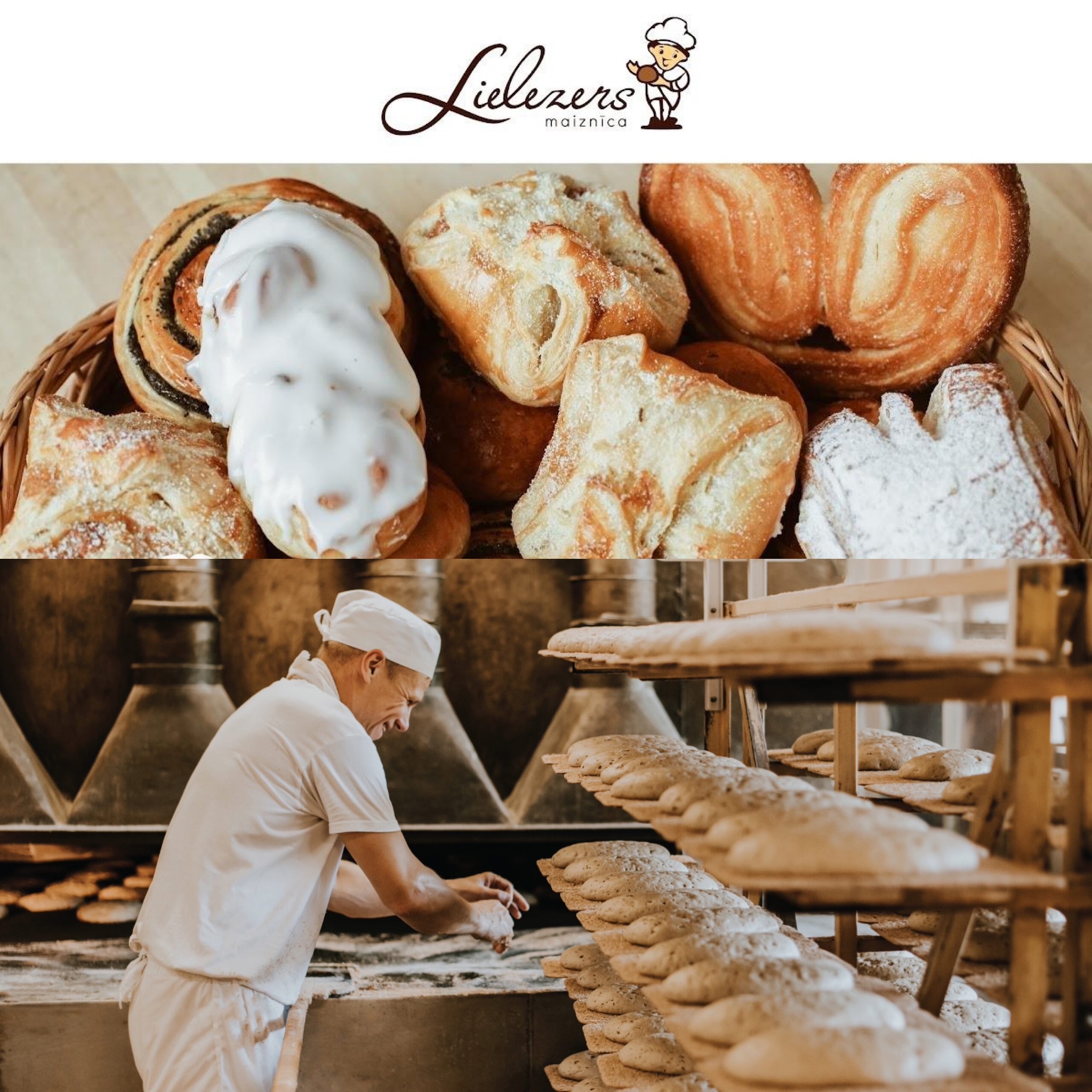Australia’s labyrinthine food distribution system means some “fresh” produce travels thousands of kilometres away from, and then back to, where it was grown. It’s a process costing farmers and regional communities millions of dollars every year. But in some fertile minds, fresh alternatives are sprouting.
A bird’s-eye view of Australia’s food supply chain would look, as one farmer says, like a “starburst in all directions” spanning thousands of kilometres.
Produce of every variety and colour — fruit, veggies, grains and meat — all makes its way to you from farms and orchards in regional “food bowls”, and then from key distribution hubs in major cities.
For the most part, the notion of food leaping the fence from “paddock to plate” no longer exists.
In a vast network of long-haul trucking and grand-scale distribution, it’s more likely to go from paddock to pallet to metro distribution centre to retailer, before reaching anyone’s kitchen to be plated and served.
To get to stores in outback Queensland, most avocados grown on the Atherton Tablelands — one of the country’s most productive food bowls …
… must first head south to Brisbane
… where they are sorted and then put on road trains to Cairns
… before being trucked west to Normanton in the Lower Gulf
Proving there really is no advantage to neighbouring a food bowl like the Atherton Tablelands
So why do Normanton’s avocados travel 4,000km before locals can buy them?
Some fresh food travels thousands of kilometres to be sorted and divvied up, before being sent back to where it came from to be sold in regional and remote supermarkets — often at up to twice the city price.
For example, until recently, prawns caught less than an hour’s drive from a shop in Karumba, in Queensland’s Gulf country, were sent on a 5,000-kilometre round-trip via Brisbane before locals could buy them in-store — if they could afford the prohibitive price.
So how does the food supply chain work?
What does it mean for farmers, consumers and communities?
Who is driving this process?
And can Australia do better?
The buyers
Coles and Woolworths control 66 per cent of the Australian grocery market, giving them huge influence over the food supply chain.
As the biggest buyers, they largely dictate how food travels, where it goes, what’s grown, its quality, and the scale of production.
In Queensland, which produces a third of Australia’s fresh fruit and a fifth of the nation’s vegetables, Coles and Woolworths both have two distribution hubs — one each in Brisbane and Townsville.
Hundreds of thousands of tonnes of fresh fruit and vegetables from all over the state are funnelled into these hubs each year before being dispersed to supermarkets around the country.
And these long travel distances add up to more than just food miles, with remote shoppers paying far more for groceries to cover freight costs, according to policy analyst and food sociologist Kimberley Reis.
“It doesn’t make sense when you’re growing food in situ, but then it’s being trucked down south and then being trucked back up north again in order to sell it,” Dr Reis says.
But, as agronomist Paul Keevers says, the logistics of the food supply chain are dictated by the “person buying [the product] from the farmer, and in most instances, it’s either a Coles or a Woolworths”.
The grower
Jim Kochi’s family has grown avocados in Queensland’s Tablelands region for close to 45 years.
He’s an hour-and-a-half drive from Cairns, but nearly all of his fruit goes to the three big eastern markets — Brisbane, Sydney, or 3,000km to Melbourne.
“We’re not marketers. What we do is we fight with the chains to get the best price we can for our fruit,” Mr Kochi says.
“The best a fruit can be is to pick it yesterday, pack it the next day, straight into cold rooms.”
Within 24 hours of being picked, the fruit is sized, graded, packed, and dispatched in consignments of just under a tonne.
Mr Kochi has sold fruit to local independent grocers in the past and still sells some third-grade fruit to local markets, but with 8,000 trees, his operation is now geared towards the major supermarkets.
“My job is to grow the fruit, to make a pallet of 160 trays of that quality that the consumer wants. And then I give it my blessings and kiss it goodbye, and it goes to a transport hub,” he says.
“It gets transported safely to … where they will break that pallet down to supply any number of customer orders.
“It’s like a starburst in all directions.”
The agronomist
Paul Keevers has worked in the Tablelands region — one of the biggest producers of bananas, mangoes and avocados in the country — for 25 years.
The region produces more than 60 crops and staple grocery items, such as milk. In fact, it produces every ingredient in your tea and coffee — milk, sugar, tea leaves and coffee beans.
“We can grow anything you want on the Tablelands. We’ve got the cool winters; we’ve got the nice warm summers,” he says.
They used to farm an even bigger variety of produce, including cabbage, carrots and lettuce, but not everything can be grown at the volume big buyers demand, Mr Keevers says.
So, farmers have stopped cultivating some crops and diversified into others that are “bigger [and] more versatile”.
“The reality is, to be a viable farm, you have to grow a lot of something. You can’t grow a lot of everything.”
Most Tablelands produce will first be trucked to Brisbane before it’s dispersed nationally and internationally, with some inevitably making its way back to the district.
Mr Keevers says the journey our food takes has become longer, and more convoluted with the dieback of independent grocers.
If growers aren’t aligned with a big buying group — such as Coles, Woolworths, Aldi or IGA — they’re going to “really struggle to get into a marketplace”, he says.
“There’s no volume of small grocers anymore.
“Anyone who is small is not actually small, they’re niche, and unfortunately, niche markets aren’t viable for the kinds of farming entities that exist.”
Fifteen years ago, the biggest challenge that faced the Tablelands food bowl was water security.
Now, it’s how far farmers have to send their produce to market, because they have to cover the freight costs to the metro distribution hubs.
“That central point has been moved to further and further away, to a location where there is a lot of consumption, but … regional areas [suffer] because it takes time to get all the way back,” Mr Keevers says.
“We can all grow crops, there’s no fear of that, and we’ve got big producers, and we’ve got small producers.
“But the key is they have to have a home for their goods.
“If they don’t have a home for it, they’ll go broke.”
Lara Wilde, managing director at Agrifood Catalyst, helps growers add value to their lower-grade produce by connecting them to manufacturers and small businesses.
The problem isn’t whether they can grow enough of their crop, it’s finding the right market and how to get it there, she says.
“What we discovered was that there are a lot of farmers out there who are very, very good at farming,” Ms Wilde says.
“The challenge, though, is that they are completely and utterly price takers, not price makers.
“It frustrates me to no end that we have some of the best produce in the world, and it’s grown on the Tablelands, and then it’s shipped to Melbourne or Sydney through our agents, and then it is slowly filtered back.
“The irony of having such a productive region, where we can grow almost anything but … have shelves in our [regional] shops that are lacking in things, is just mind-boggling.”
The community engagement leader
This is a problem Sunny Oliver-Bennetts, a doctor of corporate social responsibility, has been studying for some time.
She says collaboration between all levels of government, the private sector, and communities needs to occur before high food prices in remote areas come down and the quality of fresh food goes up.
“For Mornington Island [in the Gulf], food travels for 27 hours from Brisbane to Cairns, via truck to Karumba, and via barge to Mornington Island, and often by the time it gets there, it’s poor quality and wilted,” she says.
“Food arrives once a week on a Wednesday, and by Saturday there is no fresh and affordable food left on the shelves,” she said.
“What this means for the people of Mornington Island is significant health implications.”
Dr Oliver-Bennetts, who works for Arup, a global consultancy firm focused on sustainable development, says a recent study on the food security supply chain tracked a basket of fruit and vegetables to compare their cost to equivalent items in Brisbane.
“When they travelled to Mornington Island and Bamaga, they were 67 per cent times the price of those foods in Brisbane,” she says.
However, it is in these communities that local solutions to this national problem are starting to sprout.
The Mornington Island community, and neighbouring residents in Burketown and Doomadgee, have aspirations for a local food production hub.
“They would like to have a commercial market garden on country where they can produce, grow, process and sell their own food,” Dr Oliver-Bennetts says.
“This would create access for the local community to fresh and affordable food … and provide an opportunity to sell that produce to other local communities as well.”
But, she says, “significant investment is required to kickstart this process”, which is where governments and private organisations need to step up.
The independent grocer
At Atherton’s Fresh St. Market IGA — just 15 minutes down the road from the Kochis’ avocado farm — something innovative is already happening.
Depending on the season, the supermarket sources 15 to 40 per cent of its fresh produce — from beef and potatoes to finger limes and micro herbs — from local farmers.
Avocados, bananas and paw paws are dropped directly to the back dock by the grower.
“Wherever it makes sense, and it is logical for us to source products locally, we do,” store manager Matt Bowles says.
“They’re [the growers] not then having to freight their product to market and they’re not having to pay to freight it from market back to here.”
It’s a win-win-win for growers, the supermarket, and for customers who want truly fresh food.
But despite sourcing a significant amount of produce locally, Mr Bowles says freight is the franchise’s second-biggest expense after wages, totalling about 3 per cent of turnover.
“We are at the end of the traditional freight line,” he says.
“Brisbane to Townsville is quite a manageable run, the extra … hours from Townsville to Cairns is what makes it more complicated.”
But Mr Bowles says there are benefits in buying as much fresh produce as is viable from local farmers.
“I can have mandarins that are on the tree in the morning … and on the shelf by that afternoon,” he says.
Not only is the produce fresher than fruit and vegetables that have been sent to Brisbane before being trucked back, Mr Bowles says local farmers are supported, with better prices and fewer overheads, such as freight.
He says he hopes the Atherton model is one more local supermarkets consider.
“It’s definitely something people need to look into more,” he says.
The food sociologist
Griffith University’s Kimberley Reis, who researches local supply chains and how to make them more resilient, says the current model needs to improve.
“We don’t have a food system model that is based on supporting local and regional economies,” Dr Reis says.
She wants the big supermarkets to bring in local food procurement requirements, where food isn’t just grown locally, it’s also sorted in the region where it is grown.
In other words, “the produce doesn’t leave” the area at any stage.
“So that they [the big supermarkets] are showing good corporate responsibility to support the self-reliance and the resilience of that region,” she says.
But a Coles spokesperson says central distribution points and a national supply chain “is the most effective way for us to deliver value and quality for our customers”, with the same prices for shoppers in the supermarket giant’s city and regional stores.
“While some suppliers could deliver direct into stores on a case-by-case basis, this is not a sustainable business model for a retailer of our size,” the spokesman says.
“It would result in reduced quality, more trucks on local roads and, ultimately, higher prices for our customers.”
Both Coles and Woolworths have 20 distribution facilities nationally, servicing about 2,000 stores combined.
Woolworths’ distribution network is the largest retail supply chain in Australia.
“The right balance of scale and efficiency is important across such a large nation and supply chain — for both fresh suppliers and our stores,” a company spokesperson says, adding that the Townsville hub “plays a critical role in supporting natural disaster resilience for the north of the state”.
The butcher
The Lower Gulf is cattle, prawn and barramundi country.
Normanton butcher Ash Gallagher sells all three, but only two are sourced locally.
The Gallaghers’ meat comes via Brisbane from as far away as Western Australia and Tasmania — wherever the wholesaler can get the best price.
Even beef, which is reared around Normanton, is fattened, slaughtered and processed elsewhere.
Mr Gallagher’s family also runs a cattle farm where they kill their own stock, but shoppers’ expectations and preferences for specific cuts — such as rumps and fillets — mean the size of their herd could never meet that demand.
“The stuff we’ve got in the fridge at the moment, some of it’s from Gympie, some of it’s been slaughtered at Dinmore [in Queensland’s south-east]. We’ve got New England lamb. It comes from all over,” he says.
“You’ve just got to do it. It’s the only thing you can do.”
Until recently, the Karumba prawns the Gallaghers sold — caught less than an hour’s drive away — would make a 5,000km round-trip via Brisbane before arriving at the shop for customers to buy, he says.
And because of the size of that supplier, they’d have to buy a tonne of prawns at a time.
Now they source prawns from a local fishmonger, which means they can buy in smaller volumes, and avoid the logistics and costs of freighting “fresh” prawns from Brisbane.
“It’s way less hassle. You can drive down and pick them up yourself,” Mr Gallagher says.
Ms Wilde, who is based in Cairns, doesn’t see Australia’s supply chains changing under the current duopoly.
“It’s a numbers game, isn’t it? They’ve got the majority of consumers down there [south of Cairns] so an agent can come in and say, ‘I will buy so many tonnes, take it all to Brisbane, divvy it up, get their premium down there’.
“Then we’re getting what’s left over back in our area in the north.”
The local store
Freight makes up about 10 per cent of Foodworks Normanton’s costs.
Although located 600km west of the Atherton Tablelands food bowl, most of the supermarket’s fresh produce comes from Brisbane, on a 2,700-kilometre, three-leg journey by truck and train via Cairns.
“Typically, in a month, our freight costs anywhere between $40,000 and $50,000,” Gulf Regional Economic Aboriginal Trust business adviser Gene Geedrick says.
The Indigenous-owned supermarket subsidises fresh fruit and vegetables, with an overall profit margin of 2 to 3 per cent.
“The whole purpose behind the store was to provide food security to the Lower Gulf, and food security means good quality food at a competitive price,” Mr Geedrick says.
The organisation advocates for a more circular, local economy to lower freight costs, and a supply chain that’s less vulnerable to disruption during the wet season and natural disasters.
But it’s not always possible to get seafood locally, or at a price their customers can afford, so sometimes they stock prawns from overseas.
“There’s not a lot of money floating around in Normanton, people shop on price,” Mr Geedrick says.
“A lot of the locals supplement their diet through fishing and hunting.
“People have said if it wasn’t for their hunting and fishing, they wouldn’t survive.”
The community
Kukatj elder Francine George shops for a household of five — four adults and a child.
She’d love to buy avocados but they’re often too expensive.
Depending on the season, an avocado in Normanton can cost twice as much as it does in a city, and even more in the wet when the town’s cut off.
Ms George’s grocery bill is more than $1,000 a fortnight.
She says a three-litre bottle of milk costs $8 in Normanton — almost twice as much as families who live near a Coles or Woolworths supermarket pay.
“If you’re paying say $6 in the city for something, in Normanton you’d be paying 100 per cent more,” she says.
“Forget about the apples and oranges, sometimes you just can’t afford those things.”
She says they always have tinned beef, rice and flour for damper in the cupboard, a lot like the rations Ms George’s mother was paid in while working on Gulf cattle stations half a century ago.
“It’s that old ration that our parents taught us, ‘This is what you need, you need these food items to get you by’.”
Ms George says it’s a lot easier to get groceries since the big supermarket opened three years ago, but supply can still be patchy.
“Sometimes if you’re not quick enough, you go in there and there’s nothing left and you’ve got to wait for them to get the next truckload of food,” she says.
“I see it firsthand that kids go without fruit and veggies, they go without a decent meal.
“They just settle for noodles or settle for the old bully beef, and that’s it.”
Sometimes they supplement their dwindling food supplies with bush tucker, such as fish, turtle, goanna and bush turkey.
More than half of Normanton’s 1,300 residents are Aboriginal or Torres Strait Islander.
“Indigenous health will never improve with all the gaps that are out in our communities,” Ms George says.
“When you say go back to the basic, well, the basic for us is to have tinned meat in your cupboard and have a packet of rice there and have the whole flour there, because if you haven’t got money for bread, you go back to eating that sort of food.”
Watch ABC TV’s Landline at 12:30pm AEST on Sunday or stream anytime on ABC iview.
Credits:
- Reporting, photography and video: Jessica Black and Lucy Cooper
- Graphics: Thomas Brettell and Alex Palmer/Digital Story Innovations
- Editor and digital producer: Rachel Kelly











